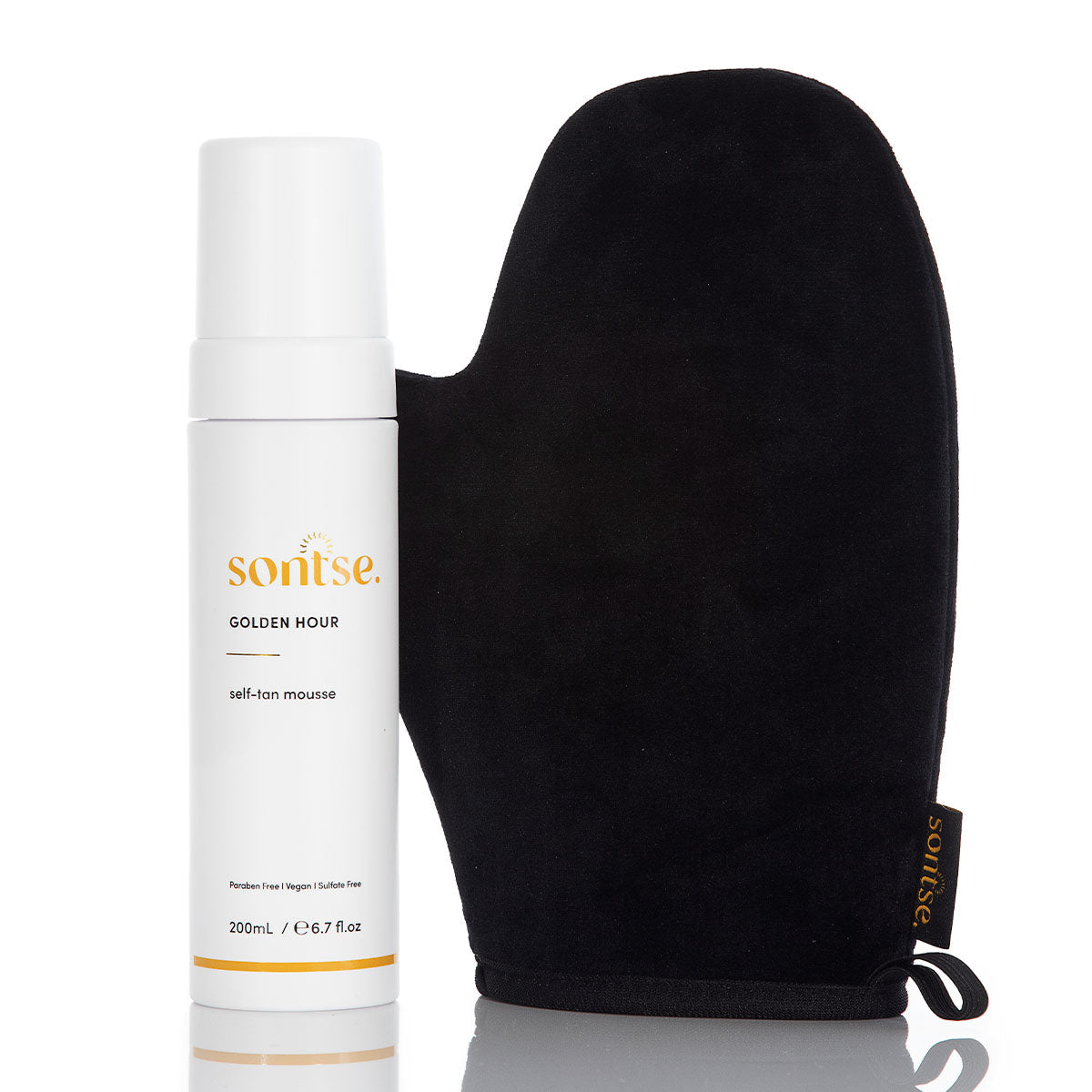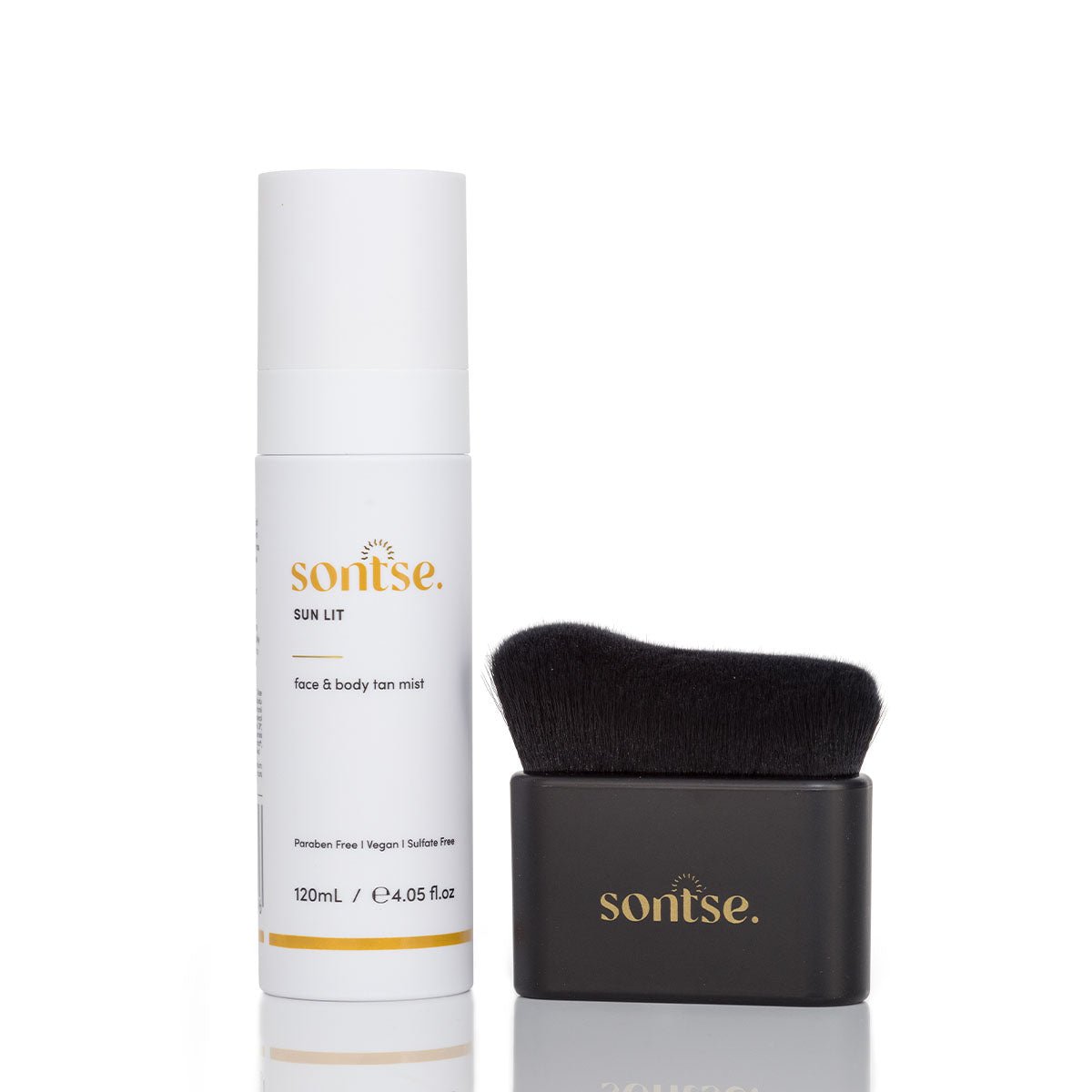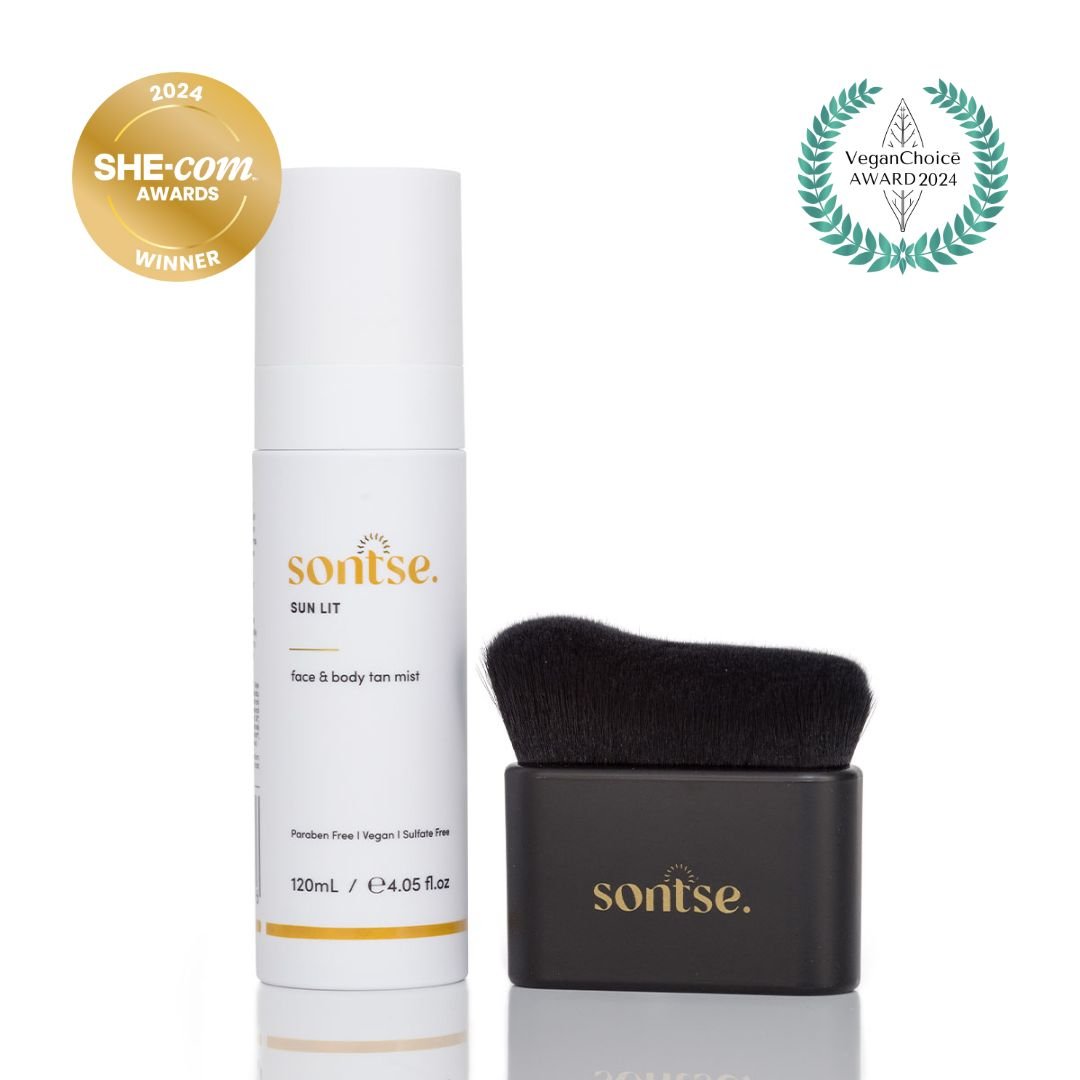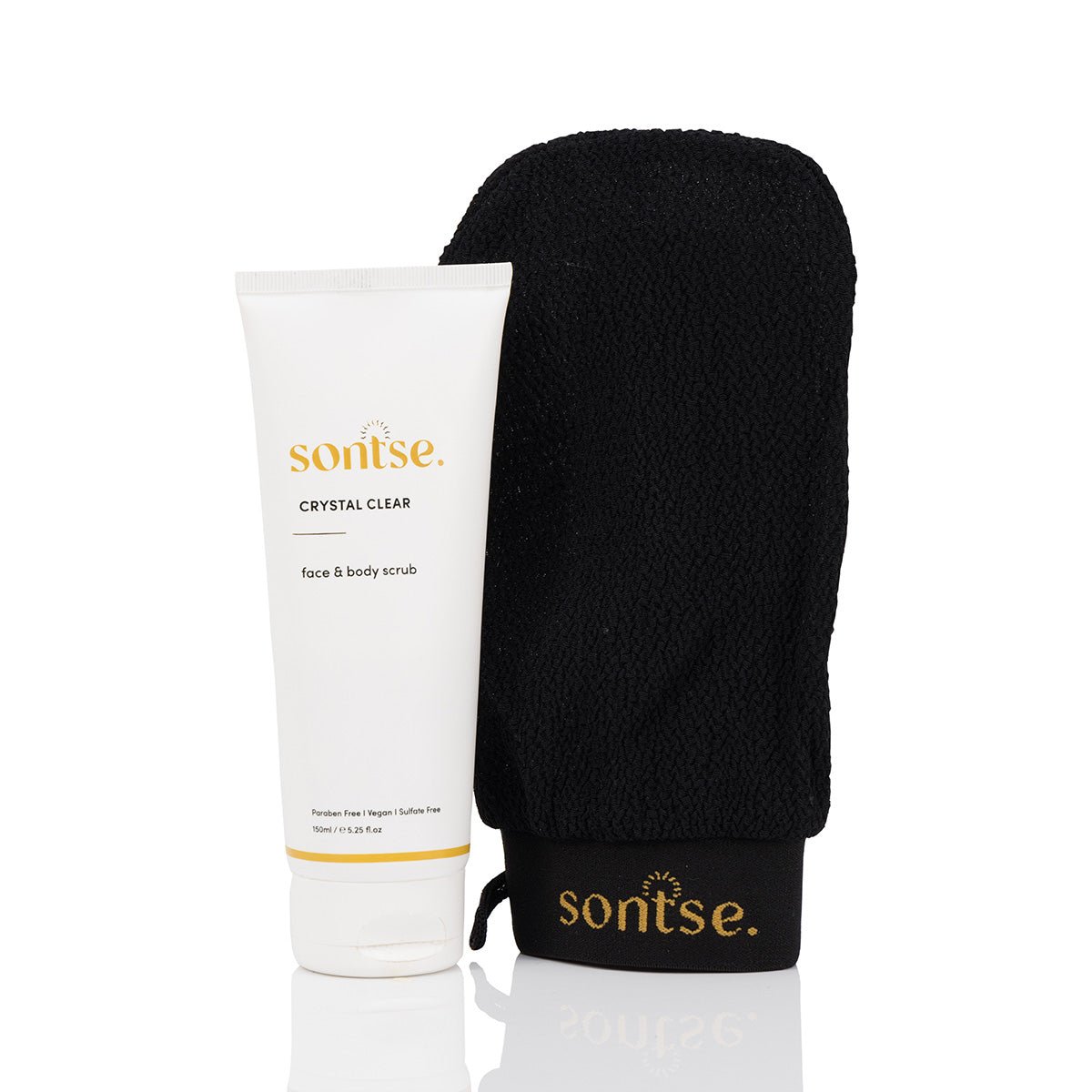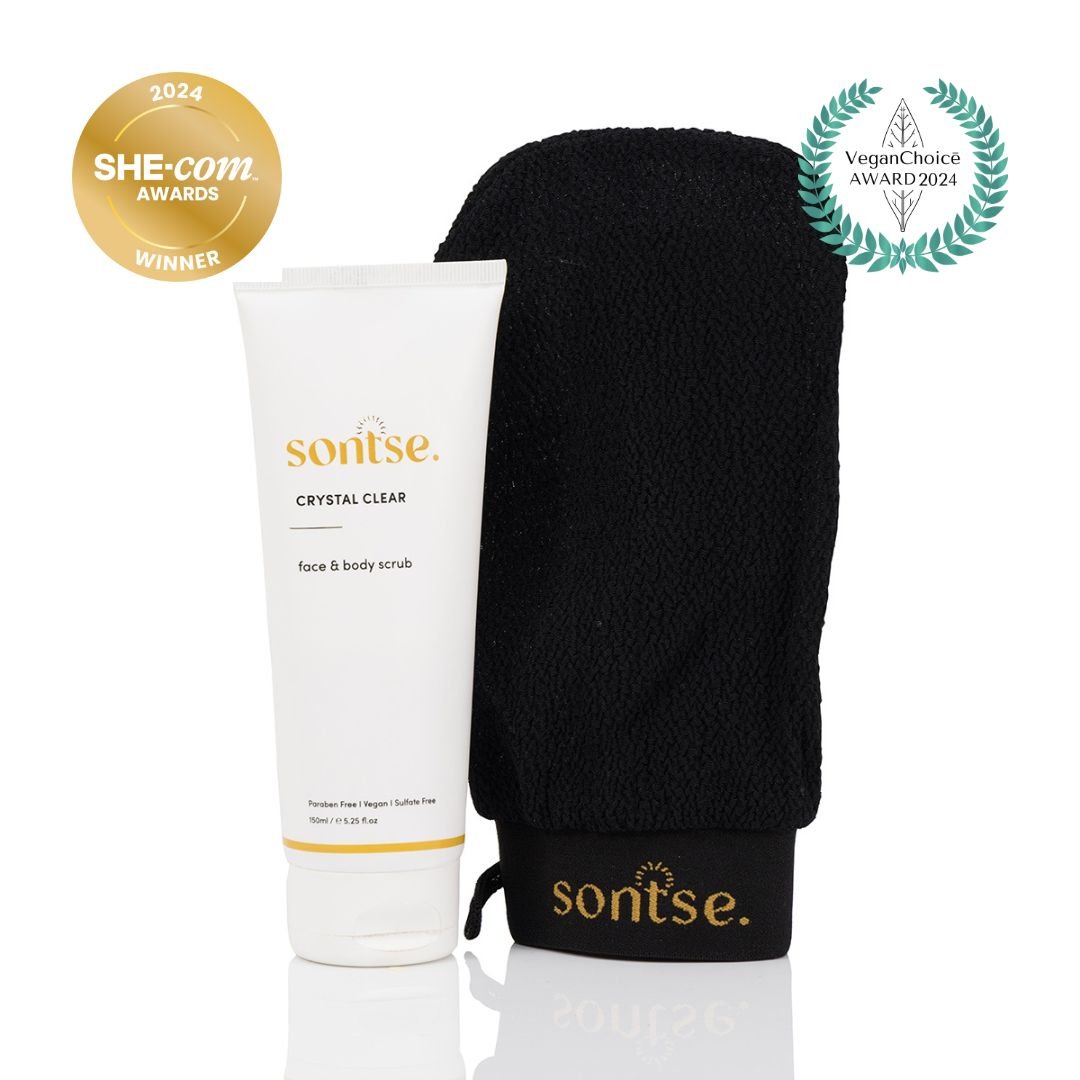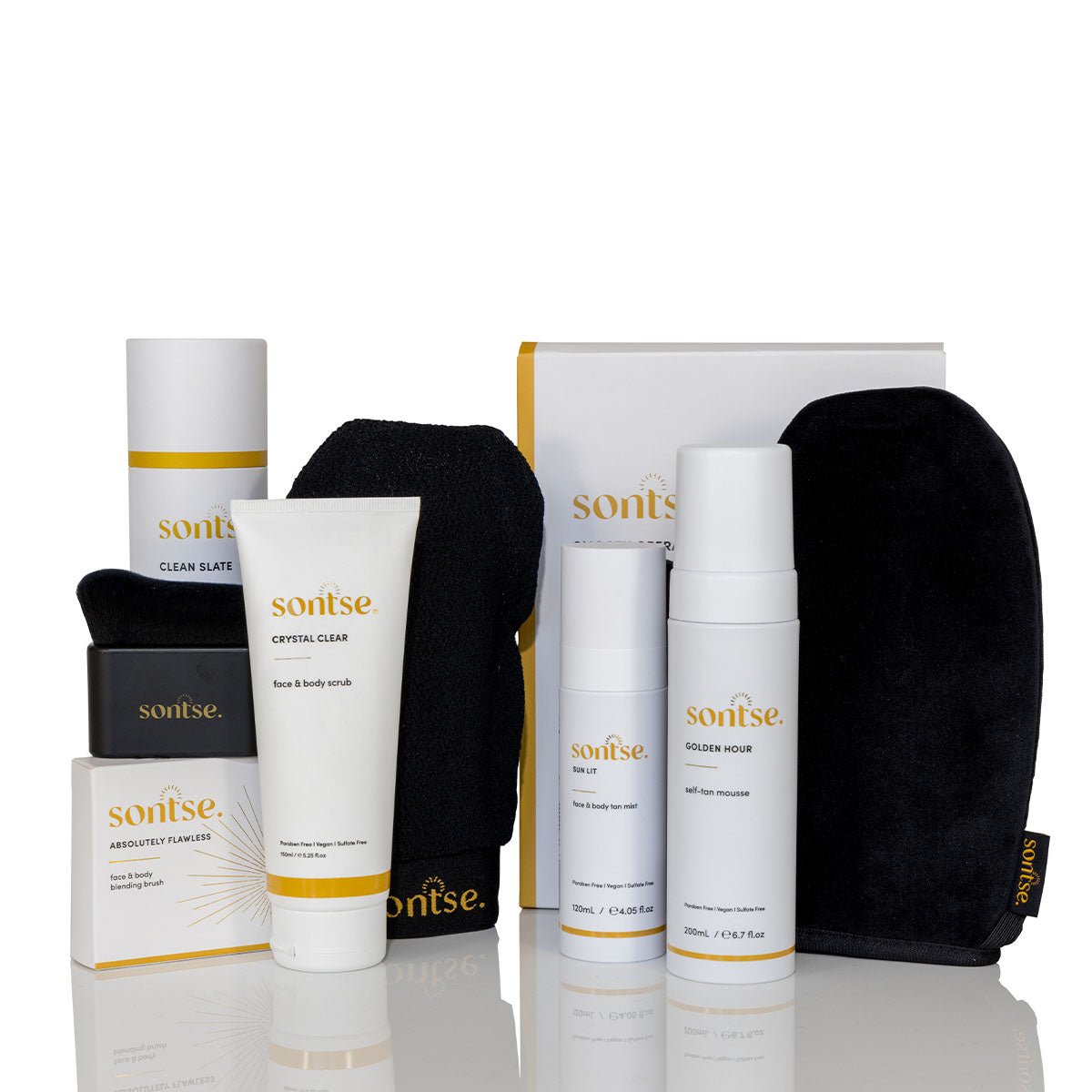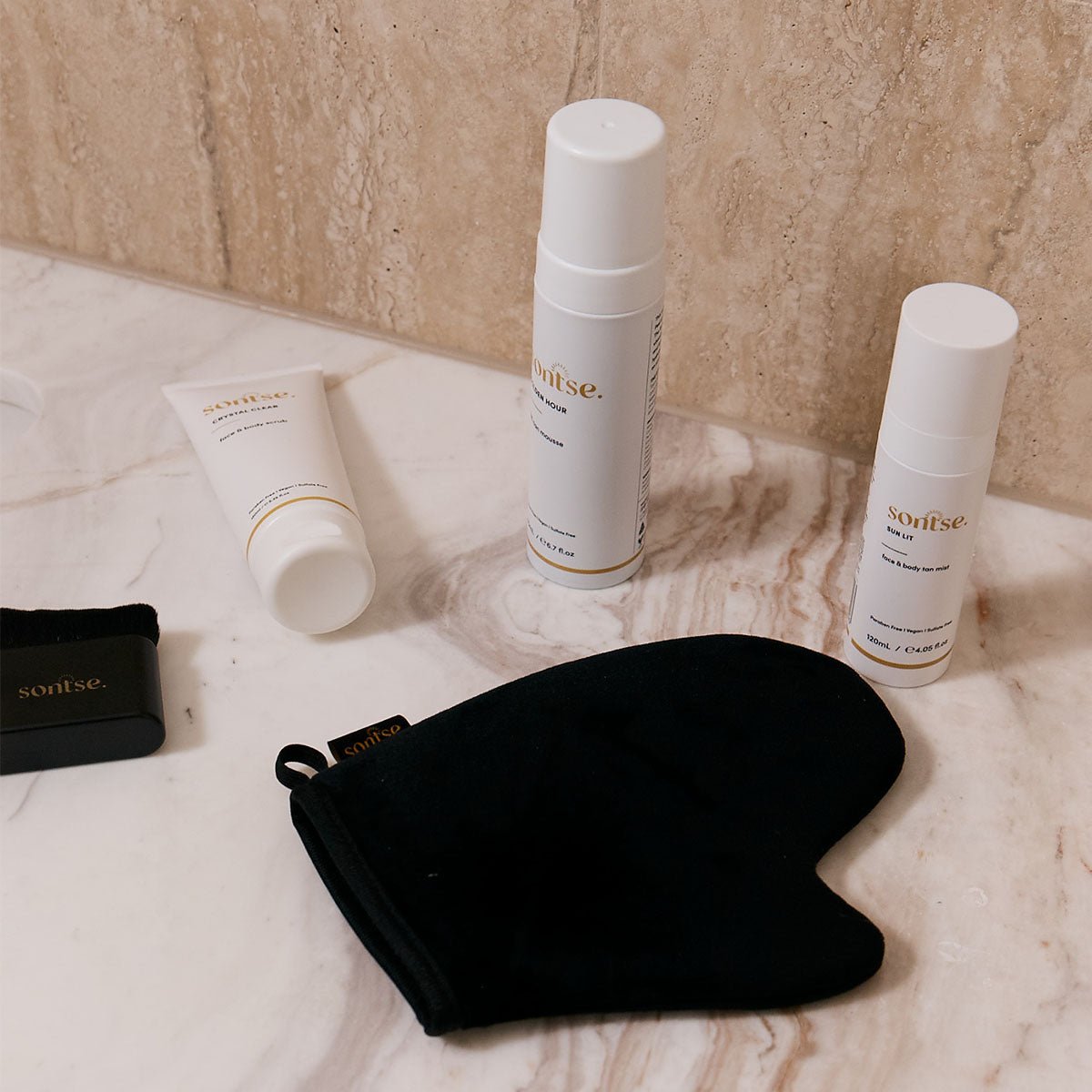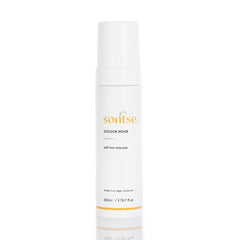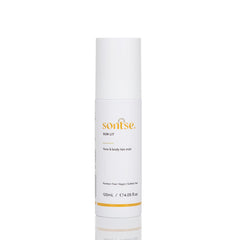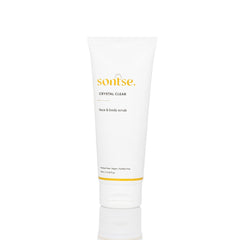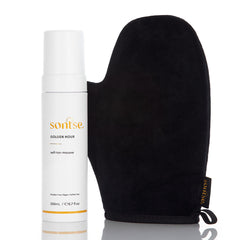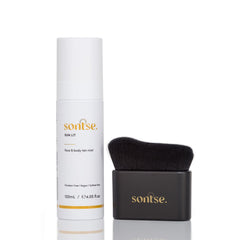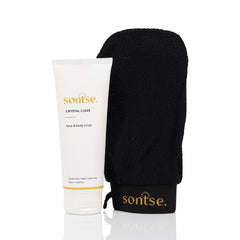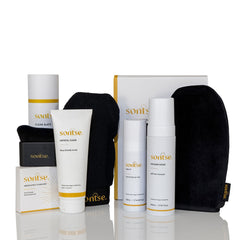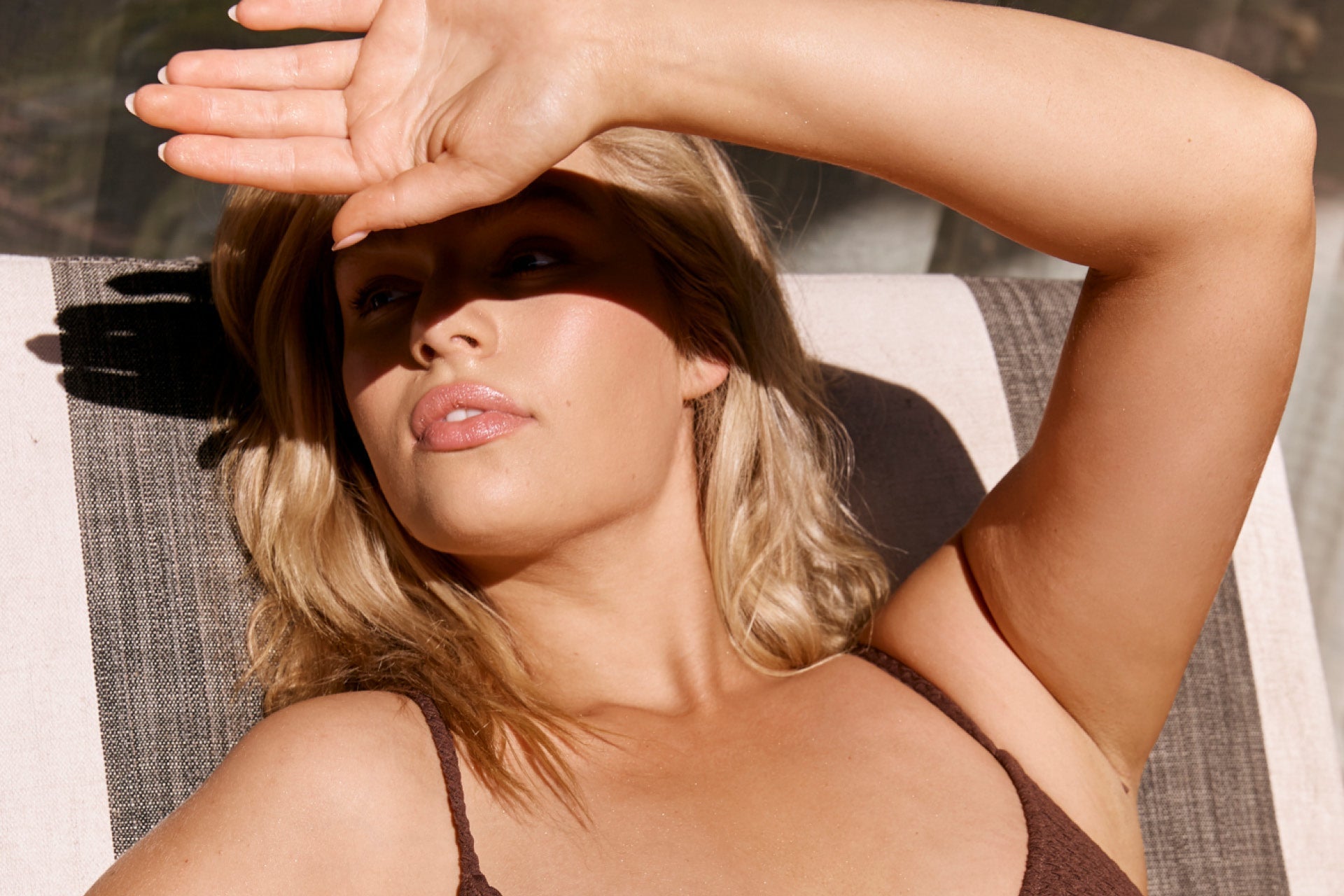Ever wondered how the beauty product industry is regulated and whether you really are making the healthiest, cleanest choices for your skin? If you consider yourself a skin-conscious consumer who is mindful about what goes onto your skin and into the products you buy, then this is the article for you.
Interviewing Amina Kitching, Philanthropist, Nutritional Med.KvB-Scholar, WIRES Wildlife Rescue & Rehabilitation Volunteer and Founder of Safe Cosmetics Australia, together we’re shedding a UV-free light on the way the industry works and how consumers can make more mindful choices with cosmetic products in the market.
First up, how are cosmetics regulated in Australia?
According to the Therapeutic Goods Administration (2022), ‘Product labelling and safety for cosmetics is regulated by the Australian Competition and Consumer Commission (ACCC).’ However, ‘The Therapeutic Goods Administration (TGA) regulates medicines and products that are marketed for therapeutic use under the Therapeutic Goods Act 1989 (the Act)’ (Therapeutic Goods Administration, 2022).
While this all seems good and well, it does raise some concerns for those of us who care about what we apply to our skin.
The need for improved chemical awareness
According to the Therapeutic Goods Administration (2023) ‘The TGA does not assess cosmetics unless they make therapeutic claims. The ingredients in cosmetics are regulated as industrial chemicals.’
Hold on a second. Did you catch that? So, while the standard for products that are deemed Therapeutic is high, if a product simply doesn’t try to make ‘therapeutic claims’ or fall under that category, the bar is dramatically lowered…
That certainly means we, as consumers, are putting a lot of trust in brands and manufacturers to do the right thing.
It is with this knowledge that the need for an independent regulatory body becomes more apparent and why we, Sontse. as a conscious brand, sought out to be regulated and held to a higher standard on our own accord.
What is Safe Cosmetics Australia in a nutshell?
Cue in the solution we were all hoping for – Safe Cosmetics Australia (SCA).
Safe Cosmetics Australia is the leading independent, non-governmental, natural and organic cosmetics standards organisation, campaigning for a healthier future one product at a time.™
As a trusted international resource, Safe Cosmetic Australia provides ingredient policies, establishing the first Non-Toxic guide to manufacturing cosmetics in 2010. Basically, it’s that unbiased, third-party tick of approval you want to see with the products you buy for your skin.
To further shed light on the mission of the organisation, we reached out to Amina Kitching, the Founder, who shared,
‘Safe Cosmetics Australia aims to improve human health by advocating for a toxic-free future. Based on the application of scientific principles applied to health & beauty products – our mission is advocacy, education, research, and policy.
‘At the core, we ensure that brands question the integrity of the ingredients they use. We ask them to find out what each ingredient is made from, and where there are multiple chemicals used to make a particular chemical, it won't be listed on the ingredient label, so we ask that brands find out what each and every hidden chemical is made from. Only then can a brand truly market their products effectively and honestly.’
In essence, SCA makes it easier for consumers to make healthier choices to connect with certified brands that question each and every ingredient they use. By providing the world with ingredient standards that consumers can trust and manufacturers adopt into their manufacturing process, the organisation helps achieve a balance between health, science, and nature and is dedicated to helping people make more informed choices that support their health.
Proud of the ethical and reputable name that the organisation has established, Amina further shares,
‘Consumers trust our trademarks because we have a proven track record in researching, evaluating and implementing policies on the use of chemicals concerning human health, ethical manufacturing and sustainability.
‘Tackling the chemical crisis means continually researching mainstream product ingredient labels, comparing scientific data, and listening to consumers and manufacturers.’
Why the Safe Cosmetics ‘stamp of approval’ is so critical
This may just blow your mind… but inside a skincare product deemed as ‘cosmetic’, almost every single ingredient can be made from multiple chemicals yet still be listed on the ingredient labels as only one ingredient.
Discussing this reality further, Amina explained,
‘This is actually allowed by current cosmetic regulations, so SCA's role extends beyond what consumers are privy to.
‘For example, glycerin can be made from an array of different plants, from animal fats or from petrochemicals or synthesised artificially in a lab by hundreds of different chemicals. Consumers will only see the word 'glycerin' on the product label, whereas we ask the brand to declare what the ingredient is made from. Where there is any doubt, it is assumed to be artificial and contributes towards the total use of petrochemicals in a product, which is restricted by SCA's Hotlist to 1% for the Toxic-Free trademark. We have to allow for 1% of all chemicals listed on the Hotlist due to cross-contamination, the only way the brand can be sure that the product is free from a particular chemical is to test the product or ingredient, and whilst many do conduct these tests, it is not always affordable for every brand to do so.’
How to find out if the products you use are SCA-approved
Safe Cosmetics Australia's trademarks are seen on millions of products every day around the world. When you see this certification, you can be sure that the product has achieved a level of expertise that other brands have not.
Below is what the trademark looks like.

What the Safe Cosmetics Australia Trademark promises
As a voluntary certification program, SCA's trademarks verify that the brand has taken the initiative to make the best possible choices at every stage of development in producing their products.
In the words of the founder, Amina shares,
“Consumers can rest assured that the brands we work with have made a commitment with Safe Cosmetics Australia; we have formed a Partnership For The Future™. They are committed to creating healthier products For You Me & The Planet™, to advancing sustainability, and meeting the demands of natural beauty advocates.”
Ingredients matter; the quality of a product should always be based on what it is made from. Safe Cosmetics Australia's trademarks recognise expertise and credibility in the natural and organic, sustainable beauty market.
Already excited to explore the list of products that proudly wear the Safe Cosmetics Australia trademark? You can see our very own Sontse. Sunless Tanning Collection amongst the coveted list of SCA-approved products.
Where it all began… asthma, allergies and chemical sensitivities… Amina’s story behind Safe Cosmetics Australia
In her own words, Amina shares a very relatable skin story and how that shaped her life’s passion, pursuit of purpose and career.
“As a child, I grew up in a semi-remote area of Sydney, where we collect our rainwater and the air is purified by surrounding bushland and waterways. Visiting family and friends in the city and surrounding suburbs, showering, drinking their water or swimming in the chlorinated pools, by the age of six, I had developed allergies and sensitivities to chemicals. My late father was also a leading artist, a sculptor working with all types of casting resins, fibreglass, paints, and an array of toxic chemicals that smelt terrible. I would often walk into his studio and open a window as I couldn't breathe.
From a young age, I was very aware that chemicals played an important role in our everyday lives. Learning from my father, Mike Kitching, and from my specialists who treated me for asthma, allergies and anaphylaxis to nuts, bees, artificial fragrances, fibreglass fibres, chlorine, nylon, smoke, pollution, food-grade colours and preservatives, and many other foods and insect bites as well as chemical sensitivities in almost every product on the supermarket shelf, I could not use normal shampoo or mascara, I could not go near the big brand name face creams my friends used. My skin would literally become inflamed within minutes, or I would have asthma, hives or facial swelling.
‘What I did notice from a very young age was that being near the ocean, in the environment, I was healthy, the ocean didn't burn my skin like chlorine, the air was clean, so I didn't cough or get asthma. My mother cooked all of our meals, so I was rarely exposed to packaged food. This life-long experience gave me a firm understanding that science and nature were intertwined with health and beauty.
“In 2001, developing my own 120-piece collection of Australian Native skincare and mineral makeup products, I began to formulate cosmetics. By 2002, I was concerned that the Australian beauty market had virtually no platform to present their beautiful products, that was by far the healthier option compared to artificial imports, and importantly, I believed that we should be supporting Australian-made products, not only because it is more sustainable, but it was the key to establishing a homegrown organic beauty market. I launched my first website, called The Organic Beauty Review, in 2002; people thought I was silly to launch a website as hardly anyone used the internet! By 2010, the site relaunched as Safe Cosmetics Australia, The Toxic-Free Campaign. In 2017, I began Australian Toxic-Free Awards™ & the Organic Beauty Gift Guide. Later that year rebranding to the Organic Beauty Award. In 2022, I launched the THINK CLEAN app and the Clean Beauty Magazine, a free-to-access digital magazine that is now going to print. I am so proud of everyone's work over the last 20+ years, to see how far the natural beauty industry has come and to witness its growth brings me daily inspiration to continue working in this amazing industry.”
Of course, Amina’s journey has had many highs and lows along the way.
Breaking the myth that natural cosmetics ‘don’t work’
Although Amina’s story is one of great success, as a pioneer who has had to pave the way for better regulation in a huge multi-billion dollar industry, you can expect that her journey has not been without challenges.
Smiling as she remembers, Amina recalls,
“Initially, people would ask me what I did for work, and I would explain that I had my own range of natural cosmetics and the Toxic-Free Campaign.
“The response was that natural cosmetics did not perform as well as big brand names, and I was told that I was 'crazy' for saying there are toxic chemicals in everyday products.
“By 2006, there was, thankfully, a growing online presence including scientific resources that I could reference. This enabled me to prove that the chemicals in supermarket products, and other big brand names, were in fact using petrochemicals and many other toxic chemicals, some of which were banned in other countries.”
Confident and determined, Amina knew that with the right evidence, educating the population would soon see a more informed consumer culture who would be more mindful of their purchases, and she was correct. But an unbelieving consumer market was the least of her concerns…
The fight against the mission
Coming up against the companies making money off the industry was the biggest hurdle Amina faced.
She openly shares,
‘The other challenge I faced was online trolling, in particular two individuals that were employed by leading chemical suppliers – one in the UK and a cosmetic formulation specialist right here in Sydney.’
‘I was accused of spreading propaganda, I was sent numerous threatening emails and publicly humiliated. The fact that they wanted to stop me from campaigning for safe cosmetics made the issue even more important to me; when people put me down or spread gossip, I simply remind myself that it says more about them than it does about me, and I grow stronger, I work harder, I stand my ground. I have always loved that saying about the mosquito, "Anyone who thinks that they are too small to make a difference has never tried to fall asleep with a mosquito in the room."’
What should people look for in a cosmetic brand? And what to stay clear of?
So here’s the thing… cosmetics are personal, it is often by trial and error that we find the perfect product...
When it comes to the practicals, Amina suggests:
- Whilst awards like ‘best toxic-free’ or ‘clean choice’ generate attention for brands, it is important that consumers make up their own minds by reading the ingredient labels, just as you do for the food you consume; it is the ingredients that matter most when it comes to your health.
- If you know you are sensitive or allergic to an ingredient, it is best to avoid it altogether. However, as someone who has personal experience with allergies and as a nutritionist, I have always exposed myself to my allergens to help reduce the severity of the reaction. If I avoid nuts altogether and then accidentally eat something with pine nuts in it, I can have a sudden severe asthma attack. Although I don't eat pine nuts as I am anaphylactic, I do eat peanuts once a month to help lower the response, and nuts taste amazing! I do the same with bee products as I am sensitive to propolis; my lips can swell when I use a beeswax lip balm. If I apply it the first day, I may have no reaction at all, but then once I apply it a second and third day, suddenly I can feel the tingling, and that's it, I can't touch it again for a few weeks.
- Always patch test a product before use, I would take this 2-3 steps further and give your skin 2-3 applications before deciding if you have a true sensitivity to it or not. Sometimes, it is just a new ingredient that your body is not used to, and other times it is more serious. At the end of the day, we all have to be responsible for our own health, and understanding our bodies is the key.
- Pay attention to how you feel and noting any reactions is the key to finding the right products, whether it is minimising pores or just finding a product that doesn't irritate your skin.
- For those with skin complaints, choose products that have fewer ingredients and look for certifications that provide consumers with a higher standard of manufacturing principles than current legislation permits. (This is where the Safe Cosmetics Australia Trademark takes out the guesswork and proves this for you!)
- Try and avoid products with any of the ‘Hotlist’ ingredients. At Safe Cosmetics Australia, we have done the research, delivered the Hotlist of chemicals to restrict and exclude, and continue to update the list annually and as required to continue raising the standards of manufacturing around the world.
- Purchase from brands who engage with Safe Cosmetics Australia Toxic-Free Campaign. The Toxic-Free Campaign works from the ground up, from the development stage, urging manufacturers to ask the big questions to understand the difference they can make before their product hits the shelves. At present, we have over 300+ brands in the development stage, some have been in development for more than 5 years now - they take great care to trial and test their products, replacing ingredients that SCA campaigns against. They are so grateful that SCA exists as it makes it easier for them to start with an understanding of what consumers do and don't want to see in their products. This means you can be confident you’re purchasing from a brand that genuinely cares. The incredible thing to note here is… I started with a list of just 6 brands; today, I work with over 980+ clients from 14 countries.
Bonus tip: ensure a product labelled ‘natural’ is actually ‘natural’
Did you know that the term 'natural' can be used in various misleading ways? We know… it sucks.
Considering that consumers assume 'natural' means from a plant or animal, then realising that petrochemicals are sourced naturally and contain carcinogens really raises a lot of questions in relation to marketing terms.
Commenting on this fact, Amina shares,
‘This is where SCA's role is to ensure that the brands that license our trademarks understand the true nature of their product formulation, and this correlates to the consumers' expectations.’
“But how?” we hear you ask…
… The most important factor that Safe Cosmetics Australia goes after is ensuring that brands ask their suppliers the right questions before assuming the ingredient is natural. For example, just because other brands have claimed that their glycerin is natural, this does not confirm that every time you see glycerin on the ingredient label, that every brand has sourced their glycerin from plants or naturally from petrochemicals!
What’s next for Safe Cosmetics Australia?
Giving us an exclusive peek behind the curtain at what’s coming up for SCA, Amina excitedly shares,
“The next chapter is to embrace technology. We are building a new website with a new searchable Hotlist; everyone will be able to visit the site and look up chemicals. With over 40,000 chemicals available, it won't be complete anytime soon, but we will have the top offenders listed along with sustainable ingredients, which we will be focusing on more so as the goal is to have brands re-consider the sourcing of their ingredients.
“For example, pineapples are not sustainable because they use a lot of chemicals and water during the growing process. They are also grown in monocultures, which is terrible for biodiversity. Cosmetic brands use alpha hydroxy acid (AHA) glycolic acid (often sourced from pineapples). If they switched to sourcing the same glycolic fruit acid from Apples, this would reduce the production of pineapple, effectively increasing the production of Apples, which are considered more sustainable. In fact, apples extract approximately 15 tons of CO2 every year per acre and produce 6 tons of oxygen. That said, most organic production is considered sustainable, so if the pineapple is organic, this is a good thing for the environment, but if it is not organic, then apples are the better choice to achieve the same outcome, clearer pores and smoother skin. AHAs are also synthetically derived from hydrogen cyanide, a chemical warfare agent, they can be sourced from an array of sources such as wool, silk and other synthetics, including carcinogenic petrochemicals.
“So, the next chapter is to provide ratings for cosmetic ingredients in terms of sustainability, this is where I want to see real CHANGE that will help reduce the effects of global warming.”
Isn’t that just incredible? At Sontse., we love being part of a greater movement that is dedicated to making purchasing for health and sustainability simple and easy.
Written By Liana Pantalone – Beauty & Skincare Copywriter at Climbing Vine Co.
References
Therapeutic Goods Administration. (2022, January 17). Advertising: when cosmetics are regulated as therapeutic goods. Therapeutic Goods Administration (TGA). Retrieved September 29, 2023, from https://www.tga.gov.au/advertising-when-cosmetics-are-regulated-therapeutic-goods
Therapeutic Goods Administration. (2023, August 29). Cosmetics. Therapeutic Goods Administration (TGA). Retrieved September 29, 2023, from https://www.tga.gov.au/topics/cosmetics

